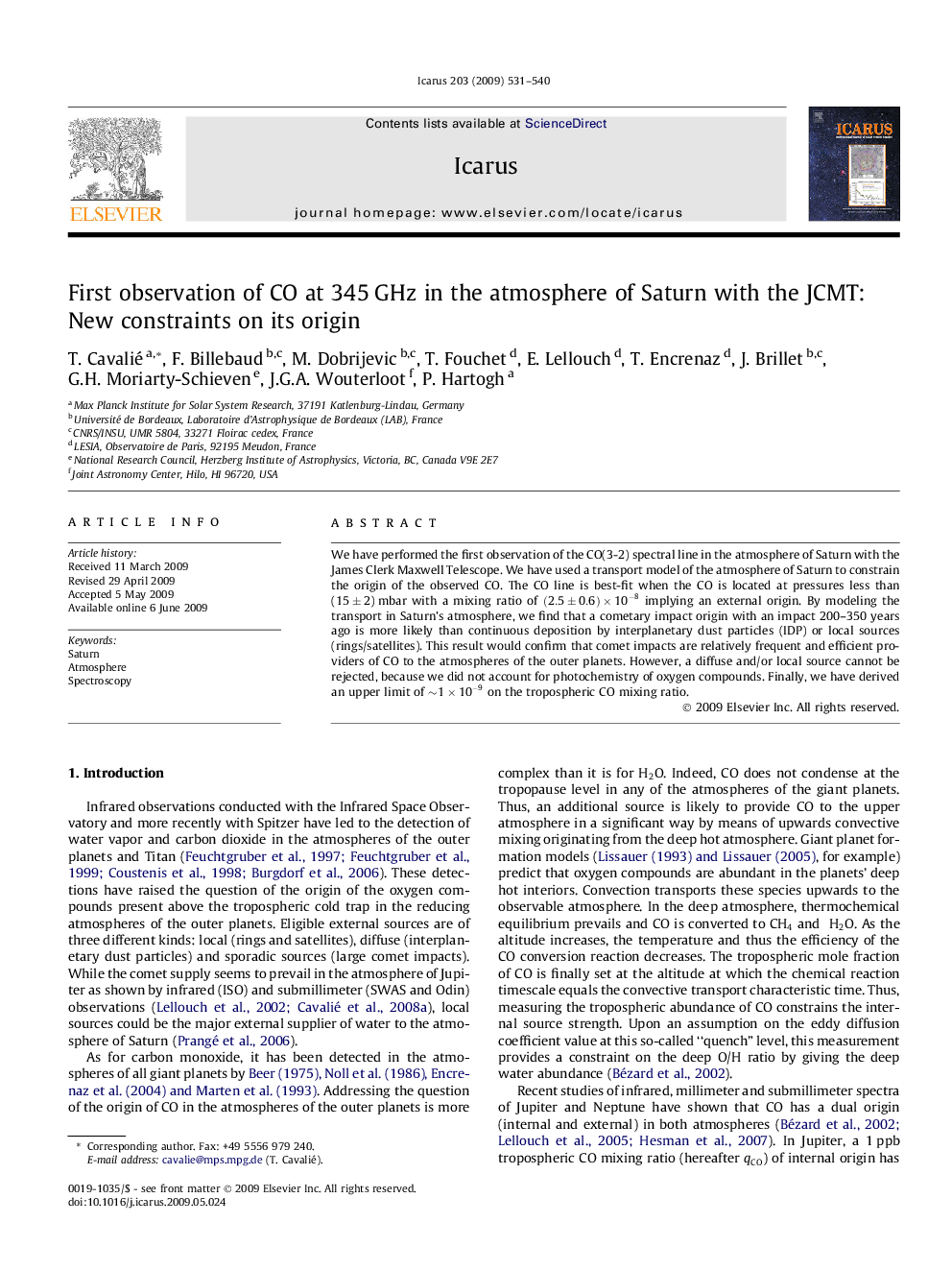| Article ID | Journal | Published Year | Pages | File Type |
|---|---|---|---|---|
| 1774897 | Icarus | 2009 | 10 Pages |
We have performed the first observation of the CO(3-2) spectral line in the atmosphere of Saturn with the James Clerk Maxwell Telescope. We have used a transport model of the atmosphere of Saturn to constrain the origin of the observed CO. The CO line is best-fit when the CO is located at pressures less than (15±215±2) mbar with a mixing ratio of (2.5±0.6)×10-8(2.5±0.6)×10-8 implying an external origin. By modeling the transport in Saturn’s atmosphere, we find that a cometary impact origin with an impact 200–350 years ago is more likely than continuous deposition by interplanetary dust particles (IDP) or local sources (rings/satellites). This result would confirm that comet impacts are relatively frequent and efficient providers of CO to the atmospheres of the outer planets. However, a diffuse and/or local source cannot be rejected, because we did not account for photochemistry of oxygen compounds. Finally, we have derived an upper limit of ∼1×10-91×10-9 on the tropospheric CO mixing ratio.
